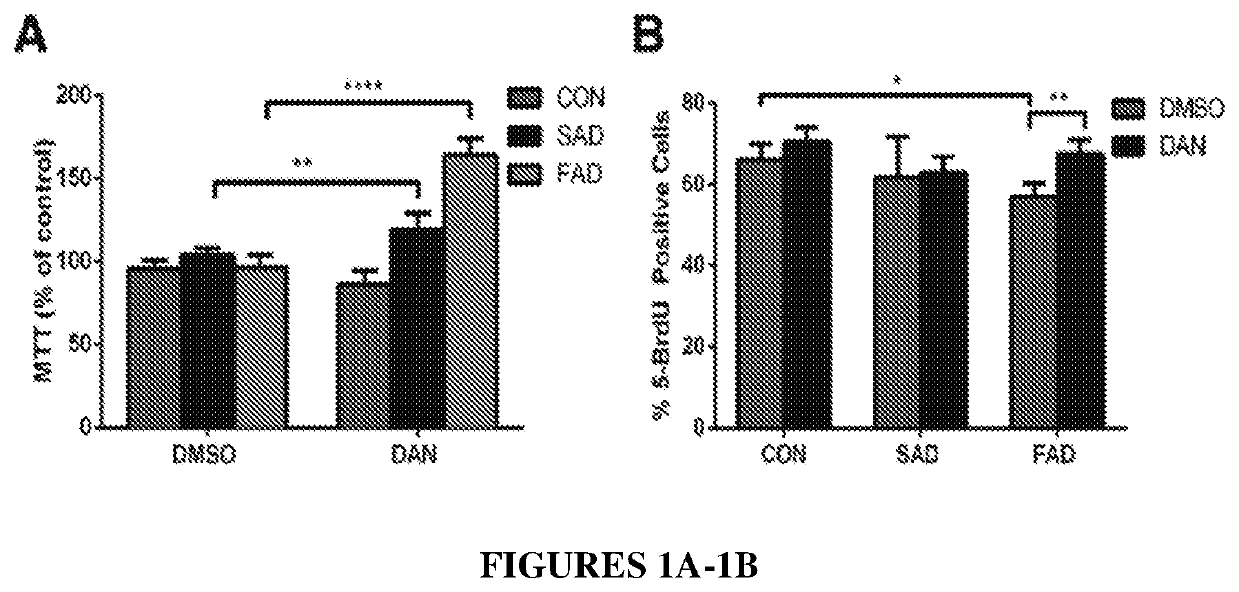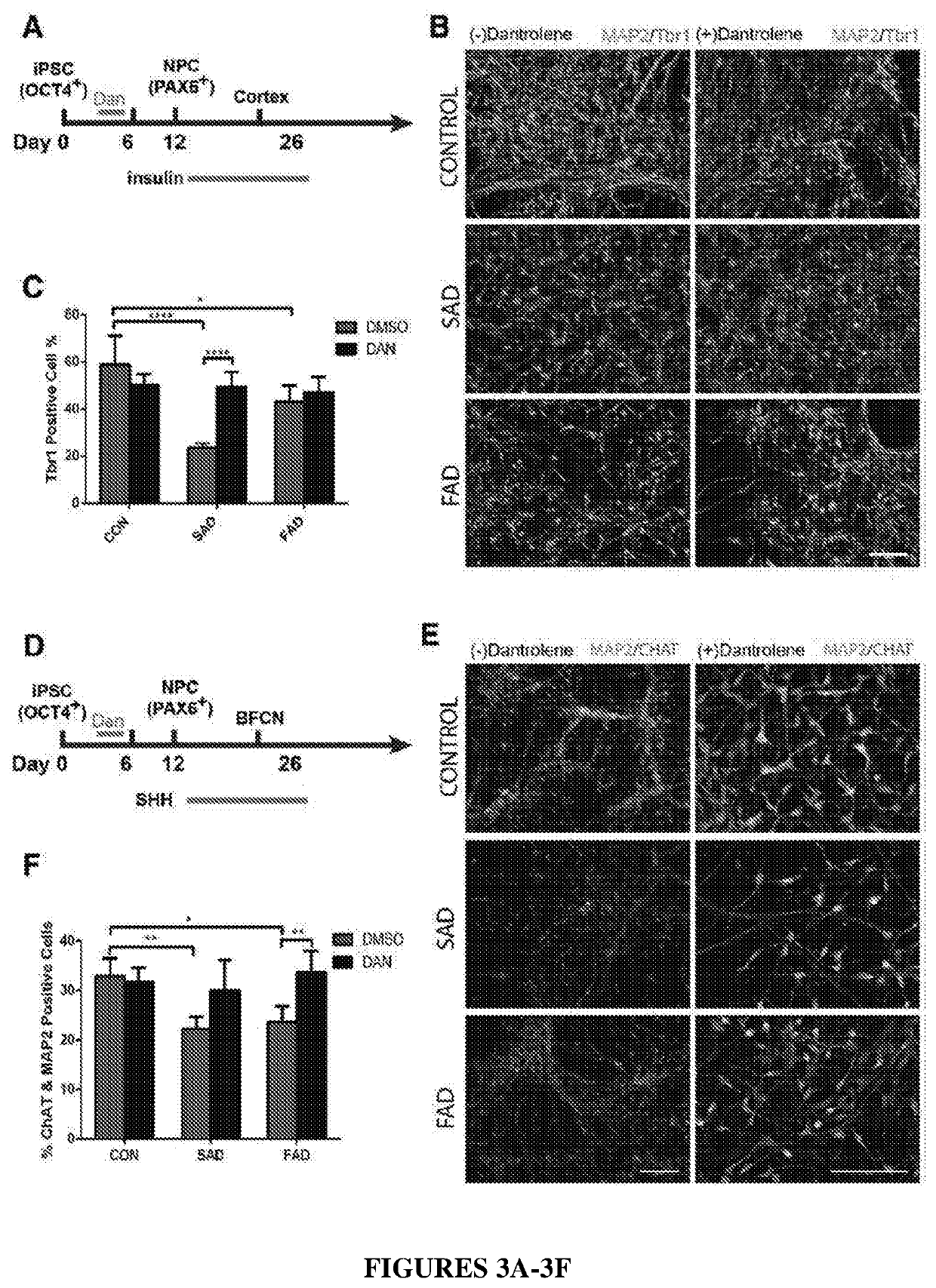Ntranasal dantrolene administration for treatment of alzheimer's disease
- Summary
- Abstract
- Description
- Claims
- Application Information
AI Technical Summary
Benefits of technology
Problems solved by technology
Method used
Image
Examples
example 1
Dantrolene Inhibits Impaired Neurogenesis and Synaptogenesis in Induced Pluripotent Stem Cells from Alzheimer's Disease Patients
[0063]While not wishing to be bound to any particular theory, it is believed that dantrolene inhibits impaired neurogenesis and synaptogenesis by correction of calcium dysregulation due to over-activation of ryanodine receptors and associated impairment of lysosome and autophagy function. In this study and with the use of iPSC from both SAD and FAD patients and their derived neuroprogenitor cell (NPC) and basal forebrain cholinergic neurons (BFCN), the effects and mechanisms of dantrolene on neurogenesis and synaptogenesis were studied. Dantrolene significantly ameliorated the impairment of neurogenesis and synaptogenesis, which was associated with its correction of RyR over-activation, intracellular Ca2+ dysregulation and disruption of autophagy.
Materials & Methods
Cell Culture
[0064]Human control (AG02261) and sporadic Alzheimer's disease (AG11414) iPSCs we...
example 2
Intranasal Administration of Dantrolene Increased its Concentrations and Durations in the Brain
[0089]Intranasal dantrolene administration is proposed as a new therapeutic approach to maximize the potential neuroprotective effects of dantrolene in various neurodegenerative diseases, in particular AD, while minimizing its toxicity and side effects. As described herein, this study demonstrates that intranasal dantrolene administration in mice significantly increased the concentration and duration of dantrolene in the brain, compared to the commonly used oral administration.
Materials and Methods
Animals
[0090]All procedures were carried out in accordance with protocols approved by the Institutional Animal Care and Use Committee (IACUC) at the University of Pennsylvania. Male and female C57BL / 6 mice, 2-4 months old, weighing 25-35 g, were used in all experiments. Mice were kept at 21-22° C. with a 12-hour light-dark cycle with food and water ad libitum. All efforts were made to minimize th...
example 3
Intranasal Dantrolene as a Disease-Modifying Drug in Alzheimer's 5XFAD Mice
[0106]This study investigated the plasma and brain concentrations and the therapeutic effects of intranasal dantrolene in 5XFAD mice and associated side effects, not only as a symptom-relieving but also as a disease-modifying drug, and compared to the subcutaneous approach as done in a different FAD animal model, as described by Peng J, et al., Neurosci Lett 2012; 516:274, which is incorporated by reference in its entirety.
Materials and Methods
Animals
[0107]All the procedures were approved by the Institutional Animal Care and Use Committee (IACUC) at the University of Pennsylvania. Two pairs of 5XFAD mice (B6SJL-Tg (APPSwFIL on, PSEN1*M146L*LV286V) 6799Vas / Mmjax) and wild type mice (B6SJLF1 / J) mice were purchased from the Jackson Laboratory (Bar Harbor, Me.) and bred. These 5XFAD transgenic mice overexpress mutant human APP with the Swedish (K670N, M671L), Florida (1716V), and London (V717I) familial Alzheimer...
PUM
 Login to View More
Login to View More Abstract
Description
Claims
Application Information
 Login to View More
Login to View More - R&D
- Intellectual Property
- Life Sciences
- Materials
- Tech Scout
- Unparalleled Data Quality
- Higher Quality Content
- 60% Fewer Hallucinations
Browse by: Latest US Patents, China's latest patents, Technical Efficacy Thesaurus, Application Domain, Technology Topic, Popular Technical Reports.
© 2025 PatSnap. All rights reserved.Legal|Privacy policy|Modern Slavery Act Transparency Statement|Sitemap|About US| Contact US: help@patsnap.com



